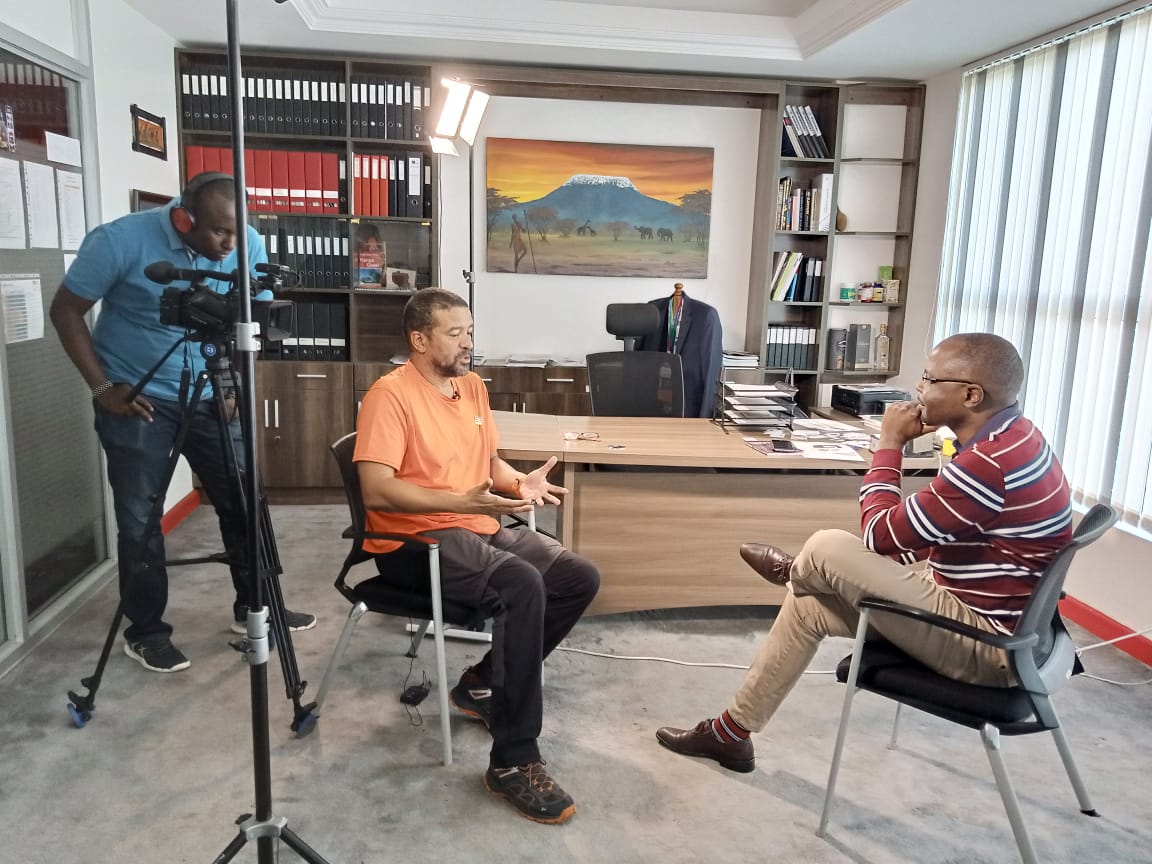
KISUMU COUNTY- Lake Victoria is the second largest fresh water lake in the world, after Lake Superior of North America. It also stars as Africa’s largest lake and the largest tropical lake in the world. The lake has a surface area of 68,800 square kilometers, which matches the size of Republic of Ireland. Lake Victoria is located in East Africa whereby It serves Kenya- 6%, Uganda-45% and Tanzania 49%.
The lake, a major resource to the East Africa has a lot of benefits to the region, currently suppressed by the jeopardy, water hyacinth. “Under the blue economy, maritime transport would be the low hanging fruit that we have,” Dr. Ali-Said Matano, Exec Sec EALBC
Economic activities around the area feed the hyacinth. Industrial effluent, farming activities and soil erosion, contribute to the detrimental development of the harmful weed. This urgently calls for control of the feeding factors.
"Motorboat engines screech, worse still going off if the boat is not strong," lamented Philemon Haruni, assistant captain.
Mbita area in Homa Bay county, however, prides itself of clean water with no hyacinth. Residents of Siaya and Homa Bay Counties and Takawiri, Rusinga Mfangano islands Luanda and Kotieno islands are happy beneficiaries of steady water transport. Two water buses cruise through the area, serving fast yet safe and convenient transport through the lake. People of this region use motorboats as an alternative means of transport.
Ironically, to the hapless people of Kisumu the experience in Mbita is just but a dream due to the water hyacinth menace that hinders transport. Water hyacinth is occasionally swept by currents, depending on their direction.
Alarming statistics according to The Kenya Marine and Fisheries Research Institute, indicate that the area covered by the weed increased from 6,142 hectares on February 11 to 7,583 hectares on February 15th this year.
Restoration of transport on Lake Victoria is underway as a flagship project spearheaded by the Lake Region Economic Bloc t revive the vast, yet dwindling resource.
“We have a directive from the governor, right honorable Raila Odinga and the President that all agencies including the regional bloc and counties must now think together. Our only term of reference is to rid the lake of the hyacinth and to dredge, that is all the principals want to hear,” Dr. Mathew Owili, Deputy Governor of Kisumu affirmed.
Bigger reliable machines are expected in at most 3 months and with a time frame of 15 months to complete the entire process of harvesting the water hyacinth, and thereafter dredging process to allow time for the construction of the new port awaiting the arrival of SGR.
The 14-Kisumu, Siaya, Migori, Busia, Homabay, Bomet, Kericho, Trans Nzoia, Nandi, Kisii, Nyamira, Bungoma, Kakamega and Vihiga -counties within the lake region economic bloc, parastatals directly linked to Marine transport are key stakeholders of the revamp process. Governments of the EAC members too are expected to take part.
Professional skills are a yardstick for the success of the project. “We need more marine vessels, we need more people to train in the marine industry so that we work in a professional way,”AnkolMwakazi, Captain, Water Bus.
Lake Victoria holds a fortune that is yet to be utilized and this will only happen upon its reclamation.
“The Kenya Pipeline has built a huge tank in Kisumu, the tank is ready to pump oil into big ships that can carry even 4 million liters of oil to Uganda and Tanzania Uganda consumes 4 million liters of oil in one day under the old way of transportation.
The big ships will be able to easily transport oil from Kisumu pipeline to Uganda and it will find its way to Rwanda, Congo and Southern Sudan and Mwanza and Musoma. That is a major milestone for the port of Kisumu… Abala Wanga, CEO, Lake Region Economic Bloc
Safety in transport is key and this could not have been overlooked. The inland port will bank on railway transport for the delivery of goods from Mombasa to the lake front and distribute to the respective counties through the lake. This is also expected to ease traffic and save time. Water transport and railway transport in sync is expected to bring a significant boost to economic growth in the lake region.
The reclamation plan comes with safety concern of those marine operators. “We have gazetted a number ‘110’ where a fisherman will be able to sound an alarm and we will be able to respond immediately,” ascertained Dr. Ali-Said Matano, Exec Sec. EALBC
Ronah Saada contributed to this article.